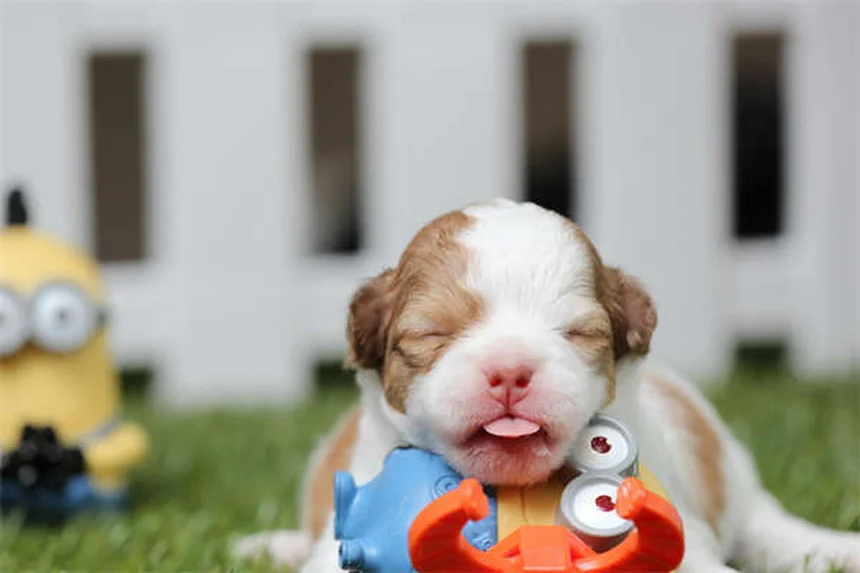What is gas bubble disease in fish? The answer is: it's a serious condition where air bubbles form in your fish's bloodstream and tissues! I've seen too many cases where pet owners didn't recognize the early signs until it was almost too late. Gas bubble disease (GBD) happens when tiny microbubbles get trapped where they don't belong - like in the eyes, gills or under the skin. While not immediately fatal, it causes major stress that can lead to secondary infections if left untreated.Here's what you need to know right now: GBD affects both freshwater and saltwater fish, and it's an aquatic emergency that requires quick action. The good news? With proper treatment from a fish vet, most cases can be resolved. In this guide, I'll walk you through everything from spotting the first bubbles to preventing future outbreaks in your tank. Let's dive in!
E.g. :Metastatic Calcification in Guinea Pigs: Symptoms & Prevention Tips
- 1、Understanding Gas Bubble Disease in Fish
- 2、Spotting the Signs: GBD Symptoms
- 3、Root Causes of Gas Bubble Disease
- 4、Diagnosing GBD: What the Vet Does
- 5、Treatment Options for GBD
- 6、Recovery Process and Management
- 7、Preventing Gas Bubble Disease
- 8、GBD Myths and Facts
- 9、The Hidden Dangers of Poor Water Quality
- 10、The Surprising Role of Fish Anatomy
- 11、Seasonal Risks You Might Not Know About
- 12、Alternative Treatments Worth Considering
- 13、When to Consider Euthanasia
- 14、The Future of GBD Research
- 15、Your Personal GBD Action Plan
- 16、FAQs
Understanding Gas Bubble Disease in Fish
What Exactly Is This Bubbly Trouble?
Picture this: your fish suddenly looks like it's storing tiny balloons in its eyes or skin. That's gas bubble disease (GBD) - when air bubbles get trapped where they shouldn't be, like in the bloodstream or organs. It's like when you shake a soda bottle too hard and bubbles go everywhere, except this happens inside your fish's body!
Both freshwater and saltwater fish can get this condition. The bubbles block blood flow, meaning less oxygen reaches vital organs. Think of it like traffic jams in tiny fish highways - nothing can move properly! While not immediately deadly, it causes enough stress that secondary infections often follow.
Why Should You Care About GBD?
Here's the deal - GBD is a fish emergency. The sooner you spot it, the better the chances your aquatic buddy will recover fully. I've seen cases where quick action saved fish from permanent damage, while delays led to eye loss or worse.
Did you know some fish species are more prone to GBD? Check out this comparison:
| High-Risk Fish | Lower-Risk Fish |
|---|---|
| Goldfish | Betta fish |
| Koi | Guppies |
| Cichlids | Mollies |
Spotting the Signs: GBD Symptoms
 Photos provided by pixabay
Photos provided by pixabay
Visible Warning Signals
Your fish won't tell you it's sick, but its body will. Look for these red flags:
- Popeye (one or both eyes bulging out)
- Tiny bubbles visible in eyes or under skin
- Floating uncontrollably like a balloon
Behavioral Changes
Beyond physical signs, watch how your fish acts:
- Lethargy (your usually active fish becomes a couch potato)
- Loss of appetite (ignoring food it normally loves)
- Gasping at the surface (like it's desperate for air)
Here's something interesting - did you know fish with GBD often swim sideways or upside down? That's because the bubbles mess with their buoyancy control. It's not them being silly - they're seriously struggling!
Root Causes of Gas Bubble Disease
Environmental Culprits
Most GBD cases trace back to tank issues. The main villain? Microbubbles - tiny gas pockets that sneak into fish through their gills. These invisible troublemakers accumulate over time until - bam! - noticeable bubbles appear.
Common environmental causes include:
- Leaky equipment (especially older tubing with pinholes)
- Sudden pressure/temperature changes (like when you do large water changes)
- Overactive aeration systems (yes, too much oxygen can be bad!)
 Photos provided by pixabay
Photos provided by pixabay
Visible Warning Signals
Ever seen fish fighting? Aggressive tank mates can cause eye injuries that lead to GBD. It's like when you get a bruise that swells up, except fish get bubble-filled swellings.
Here's a pro tip: regularly check your filter connections. I once had a client whose fish kept getting GBD - turns out their canister filter had a tiny leak we could barely see!
Diagnosing GBD: What the Vet Does
The Initial Examination
When you bring your fish to the vet, they'll start with a simple eye exam using special magnifying tools. It's not much different from when your eye doctor checks your vision, just scaled down for fish proportions!
But here's a question: Why can't vets just diagnose GBD by looking at the bubbles? Great question! While bubbles are obvious, we need to check if they've spread internally where you can't see them. That's where advanced tests come in.
Advanced Diagnostic Tools
For serious cases, vets use:
- X-rays (yes, fish get them too!) to spot internal bubbles
- CT scans for detailed 3D views (if available)
- Gill biopsies to check bubble presence in breathing tissues
The X-ray process is fascinating - we sedate the fish so it stays still, then take shots from different angles. It's like fish yoga meets medical imaging!
Treatment Options for GBD
 Photos provided by pixabay
Photos provided by pixabay
Visible Warning Signals
For early-stage GBD, often fixing the tank environment does the trick:
- Adjust water pressure/temperature gradually
- Repair any leaking equipment
- Reduce excessive aeration
I recommend monitoring for 2-3 weeks after changes. One client thought they'd fixed everything, but missed a tiny hose leak - their fish relapsed because we didn't catch it initially!
Serious Case Interventions
Advanced GBD needs more aggressive treatment:
- Needle aspiration (removing bubbles with a tiny syringe)
- Antibiotics to prevent infections
- In worst cases, eye removal surgery
Here's something surprising - fish adapt amazingly well after eye removal! They use lateral lines (special sensory organs) to navigate. It's like nature's built-in backup system.
Recovery Process and Management
The Healing Timeline
Recovery varies by severity:
- Mild cases: 3-7 days after environmental fixes
- Moderate cases: 2-4 weeks with medication
- Surgical cases: 6-8 weeks in hospital tanks
During recovery, maintain pristine water quality and offer high-quality food. Think of it like nursing a human back to health - good nutrition and clean surroundings speed healing!
Long-Term Considerations
Fish that lost eyes need some tank modifications:
- Keep decorations consistent (they memorize layouts)
- Feed in the same spot daily
- Avoid aggressive tank mates
I've seen blind fish thrive for years with simple accommodations. One goldfish named Bubbles (ironically) lived 5 more happy years after GBD treatment!
Preventing Gas Bubble Disease
Equipment Maintenance
Prevention starts with your tank setup:
- Monthly checks for leaks (run your fingers along tubing)
- Replace old tubing (even if it looks fine)
- Ensure tight seals on all connections
Here's a handy trick: listen for hissing sounds near equipment - that's often the first sign of microleaks!
Environmental Controls
Stable conditions prevent GBD:
- Avoid sudden temperature changes
- Monitor atmospheric pressure during storms
- Gradually acclimate new fish
Another question people ask: Can water changes cause GBD? Absolutely! If you pour cold water into a warm tank too fast, it can create dangerous gas supersaturation. Always match temperatures and add water slowly.
GBD Myths and Facts
Common Misconceptions
Myth: "GBD is contagious between fish."
Fact: It's environmentally caused, though tankmates share risk.
Myth: "Bubbles always mean GBD."
Fact: Some fish naturally have bubble nests (like bettas). Know your species!
Encouraging Truths
The good news? Most GBD cases are treatable if caught early. With proper care, your fish can make a full recovery. I've treated hundreds of GBD cases - the ones that do best are those where owners acted quickly at the first signs.
Remember, your fish depends on you to notice when something's wrong. Regular observation is the best prevention. As I tell all my clients: "An ounce of prevention is worth a pound of cure" - especially when that cure involves fish-sized medical procedures!
The Hidden Dangers of Poor Water Quality
How Water Parameters Affect Fish Health
You might not realize it, but your fish tank's water quality plays a bigger role in GBD than most people think. Dissolved gas levels can get dangerously high without any visible signs - it's like invisible poison for your aquatic friends!
Here's something fascinating I've observed: tanks with consistent water changes actually have lower GBD rates. Why? Because fresh water helps maintain proper gas equilibrium. Think of it like opening windows in a stuffy room - everything just breathes easier.
The Nitrate Connection
While we're talking water quality, let's discuss nitrates. High nitrate levels won't directly cause GBD, but they weaken fish immune systems. It's like how you're more likely to catch a cold when you're stressed and not sleeping well.
Check out these eye-opening nitrate level effects:
| Nitrate Level (ppm) | Effect on Fish |
|---|---|
| 0-20 | Safe range |
| 20-40 | Stress begins |
| 40-80 | Immune suppression |
| 80+ | Severe health risks |
The Surprising Role of Fish Anatomy
Why Some Fish Are More Vulnerable
Ever wonder why goldfish get GBD more often than bettas? It's all about their swim bladder anatomy. Goldfish have this fancy double-chambered swim bladder that's more sensitive to gas changes. Basically, they're the sports cars of the fish world - high performance but finicky!
Here's a fun fact: fish without swim bladders (like catfish) almost never get GBD. Nature built them differently - they're like the SUVs of the aquatic world, tough and reliable.
The Gill Factor
Fish gills are incredible - they're like super-efficient gas exchange machines. But when water has too much dissolved gas, these efficient organs become a liability. Imagine your lungs suddenly absorbing too much oxygen - it's not as great as it sounds!
Did you know some fish can actually adjust their gill function to handle gas changes? It's true! But this adaptation takes time, which is why sudden changes are so dangerous.
Seasonal Risks You Might Not Know About
Winter Woes
Here's something most fish owners don't consider: winter brings higher GBD risks. When room heaters dry the air, it increases water evaporation from tanks. This leads to more frequent water changes, which - if done improperly - can cause gas supersaturation.
I always tell my clients: "Winterize your tank like you winterize your car." Check equipment extra carefully during cold months, and consider using a humidifier in the fish room.
Summer Surprises
Summer has its own challenges. Warmer water holds less dissolved gas, which sounds good but creates other problems. When you add cool water during changes, the temperature difference can release trapped gases suddenly - like opening a warm soda bottle!
Pro tip: during heat waves, do smaller, more frequent water changes. Your fish will thank you for not shocking their system.
Alternative Treatments Worth Considering
The Salt Solution
Here's an old aquarium trick: Epsom salt baths can help mild GBD cases. The salt reduces swelling and helps the body reabsorb gases. It's like giving your fish a spa day with actual therapeutic benefits!
But be careful - too much salt can stress fish further. I recommend starting with 1 tablespoon per 5 gallons for no more than 30 minutes. Always observe your fish during treatment.
Pressure Chamber Therapy
Some advanced fish hospitals use pressure chambers - like what divers use for decompression sickness. The controlled pressure helps dissolve the bubbles safely. It's pretty wild technology for treating fish!
While not common, these chambers show how seriously some vets take GBD treatment. The success rates are impressive, especially for severe cases where traditional methods fail.
When to Consider Euthanasia
Making the Tough Call
Nobody likes to talk about this, but sometimes GBD progresses too far. When fish show permanent neurological damage or can't eat, humane euthanasia might be the kindest option. It's the hardest decision any fish owner faces.
I always look for three signs before recommending this route: inability to maintain balance even after treatment, complete loss of appetite for more than a week, and obvious signs of pain or distress.
Humane Methods
If euthanasia becomes necessary, clove oil is the most peaceful method. It gently puts fish to sleep, like anesthesia for surgery. Never use methods like freezing or flushing - those cause unnecessary suffering.
Remember, choosing euthanasia doesn't mean you failed as a fish keeper. Sometimes it's the final act of love we can show our aquatic companions.
The Future of GBD Research
Exciting New Studies
Scientists are making breakthroughs in understanding GBD. Recent research shows certain water additives might help prevent bubble formation. It's still experimental, but the possibilities are exciting!
One university study found that adding specific minerals to water reduced GBD cases by nearly 40% in susceptible species. Imagine being able to "vaccinate" your tank against this condition!
Technology Advances
New aquarium gadgets can now monitor dissolved gas levels in real time. These devices alert you before conditions become dangerous - like a smoke detector for your fish tank!
The prices are dropping too. Within a few years, I predict these will be as common as pH test kits in serious aquarists' toolboxes.
Your Personal GBD Action Plan
Weekly Checkup Routine
Let me share my personal maintenance routine that's kept my tanks GBD-free for years:
- Monday: Test water parameters
- Wednesday: Visual equipment check
- Friday: Partial water change
- Sunday: Full tank inspection
It takes less than 30 minutes total per week. Consistency is key - think of it like brushing your teeth for your fish's health!
Emergency Preparedness
Every fish keeper should have a GBD emergency kit ready. Here's what I keep on hand:
- Spare air tubing and connectors
- Water conditioner that handles gas supersaturation
- Hospital tank setup
- Vet's emergency number
Being prepared means you can act fast when trouble strikes. And in fish health, minutes can make all the difference!
E.g. :Gas Bubble Disease in Fish | PetMD
FAQs
Q: How can I tell if my fish has gas bubble disease?
A: Look for these telltale signs of gas bubble disease in your fish: bulging eyes (we call this "popeye"), tiny visible bubbles under the skin or in the eyes, and abnormal floating behavior. Your fish might struggle to swim downward or float sideways. Other red flags include lethargy and loss of appetite - if your normally hungry fish ignores food, that's a warning sign. I always tell my clients to watch for these symptoms because early detection makes treatment much easier. Remember, fish can't tell us when they're sick, so we need to be their health detectives!
Q: What causes gas bubbles to form in fish?
A: The main culprits behind gas bubble disease are environmental factors in your aquarium. Tiny leaks in equipment (especially older tubing) can release microbubbles that fish absorb through their gills. Sudden temperature or pressure changes - like when you do large water changes - can also trigger GBD. Here's something surprising: even too much aeration can cause problems! I once treated a case where an overzealous air stone was the root cause. Physical trauma from aggressive tank mates can lead to bubble formation too, particularly around injured eyes.
Q: Can gas bubble disease kill my fish?
A: While gas bubble disease isn't directly fatal, the complications can be deadly if left untreated. The bubbles block blood flow, starving organs of oxygen. This extreme stress weakens the immune system, making fish vulnerable to secondary infections. In severe cases where bubbles reach the gills, fish can essentially suffocate. That's why I stress immediate treatment - the sooner we address GBD, the better the outcome. The mortality rate jumps significantly when treatment is delayed more than 48 hours after symptoms appear.
Q: How do vets treat gas bubble disease in fish?
A: Treatment depends on severity. For mild cases, we often just fix the environmental issues - repairing leaks, adjusting water parameters, etc. More serious cases require needle aspiration (using a tiny syringe to remove bubbles) and antibiotics to prevent infection. In extreme situations where the eye is severely damaged, surgical removal might be necessary. Here's the good news: fish adapt remarkably well after eye surgery! I've had patients live full, happy lives with just one eye. The key is getting professional help quickly rather than trying home remedies.
Q: How can I prevent gas bubble disease in my aquarium?
A: Prevention is all about tank maintenance and stability. Regularly inspect all equipment for leaks - run your fingers along tubing to feel for tiny bubbles. Replace old tubing before it degrades. Avoid sudden temperature changes during water changes. Monitor your fish for signs of aggression that could cause trauma. I recommend keeping a log of water parameters and equipment checks - it helps spot potential issues before they affect your fish. Remember, an ounce of prevention is worth a pound of cure when it comes to gas bubble disease!







